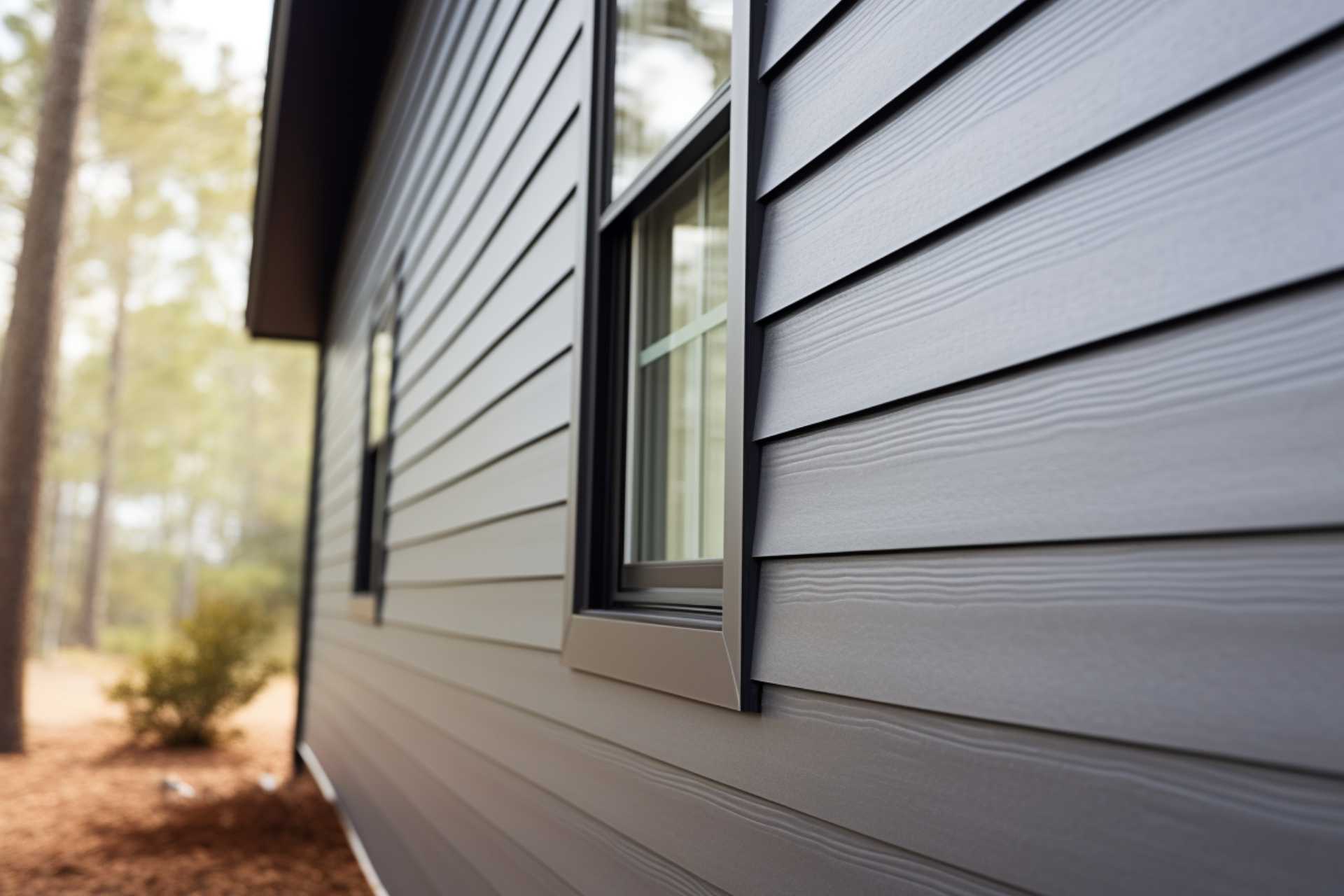
Siding plays a crucial role in your home’s insulation and energy efficiency. Upgrading your home’s siding can help better regulate indoor temperatures, reduce heat loss in the winter, and minimize heat gain in the summer. New siding can also dramatically improve the appearance of your home. Whether you’re looking to update an outdated exterior, refresh worn-out siding, or simply change the style or color to better suit your tastes, installing new siding can give your home a fresh, modern look.
Sustainable house siding typically encompasses materials and practices that minimize environmental impact, promote energy efficiency, and have long-term durability. When choosing materials for siding installation, here are several factors to consider:
1. Material Durability
Durable siding materials can withstand a wide range of environmental conditions, including extreme temperatures, moisture, UV rays, and wind. They are resistant to damage from weather, pests, and wear and tear, which means you are likely to spend less time and money on repairs, replacements, and upkeep. Opt for siding materials that are resistant to rot, decay, pests, and harsh weather conditions. The resilience of durable siding materials to various environmental factors ensures that the siding maintains its appearance and structural integrity over time. Furthermore, replacing siding can be resource-intensive and environmentally impactful. By choosing durable siding materials, you can minimize the frequency of replacements, thereby reducing the environmental impact associated with manufacturing, transportation, and installation of new siding materials.
2. Environmental Impact
As homeowners increasingly seek eco-friendly solutions for their home renovation projects, sustainable siding materials have become a prominent choice. Sustainable siding materials are often sourced and manufactured using environmentally friendly practices. This may involve using recycled materials, responsibly harvested wood, or low-impact manufacturing processes. Sustainable siding materials are typically recyclable or reusable at the end of their lifespan. This means they can be diverted from landfills and used to create new products, reducing the demand for virgin resources and conserving resources. Choose siding materials that have a minimal environmental footprint. Look for options made from sustainable or recycled materials and those that can easily be recycled at the end of their lifespan. By considering the environmental impact of siding materials, you can choose options that not only minimize your home’s environmental footprint but also contribute to its long-term sustainability and low-maintenance requirements.
3. Maintenance Requirements
Low-maintenance siding materials are often more durable and long-lasting. By investing in siding that can withstand the elements and resist damage from pests, UV exposure, and moisture, you reduce the need for frequent repairs or replacements. This extends the lifespan of the siding, conserves resources, and diminishes waste. Siding materials with minimal maintenance needs generally consume fewer resources over their lifespan. These materials often require fewer cleaning products, paints, or sealants, reducing the consumption of raw materials and minimizing the environmental impact associated with their production, transportation, and disposal. Select siding materials that require minimal maintenance to keep them looking great. Low-maintenance options typically resist fading, chipping, and staining, reducing the need for frequent cleaning and refinishing. Low-maintenance siding options can save you time and effort spent on cleaning and maintenance.
4. Energy Efficiency
Siding materials with high energy efficiency properties can help reduce the energy consumption of your home by providing better insulation. Siding materials that provide effective insulation help maintain more consistent indoor temperatures, enhancing comfort levels for occupants. Additionally, better insulation can reduce drafts and air leaks, improving air quality by minimizing the infiltration of pollutants and allergens from the outdoors. Furthermore, improved insulation can lead to reduced heating and cooling loads, resulting in lower energy bills and decreased reliance on heating, ventilation, and air conditioning systems. When selecting new siding, consider the insulation value (R-value) of the siding and how it contributes to your home’s overall energy performance. Energy efficient siding materials reduce energy consumption, lower environmental impact, enhance comfort and indoor air quality, and generates long-term cost savings.
5. Longevity and Warranty
Siding materials that are built to last typically require less maintenance over time. This means you’ll spend less money on repairs, refinishing, or replacements, resulting in long-term cost savings. Since siding materials with longer lifespans require fewer replacements, there is a reduced consumption of resources and a lower environmental impact associated with manufacturing, transportation, and disposal. Invest in siding materials that have a long lifespan and come with a warranty. High-quality, durable materials may have a higher upfront cost but can save you money in the long-run by reducing the need for repairs and replacements. Furthermore, siding warranties provide you with peace of mind, knowing that your investment is protected against defects, damage, or premature failure. This assurance allows you, the homeowner, to confidently choose sustainable siding options without worrying about potential risks or liabilities.
By considering these factors, you can choose a sustainable, low-maintenance siding option that enhances your home’s appearance, durability, and energy efficiency while minimizing its environmental impact and upkeep requirements. It is worth noting that the installation of new siding may also require the removal and replacement of existing window trim or flashing. Similarly, window replacement may necessitate adjustments to the surrounding siding to ensure a proper fit and seal. Coordinating the timing of window and siding replacement projects can maximize the energy efficiency, aesthetics, and functionality of your home’s exterior. Working with a professional for these projects can help you select and install the right materials for your home.
